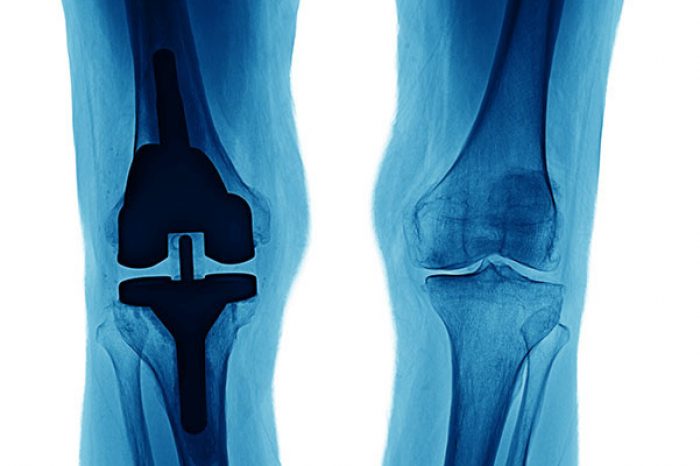
Viscosupplementation injections are a popular treatment option for people suffering from knee osteoarthritis. If you’re exploring ways to manage joint pain without surgery, understanding how these injections work can help you make an informed decision.
Viscosupplementation is a minimally invasive procedure that involves injecting hyaluronic acid directly into the knee joint. Hyaluronic acid is a naturally occurring substance found in the synovial fluid that cushions and lubricates the joints. In people with osteoarthritis, the concentration of hyaluronic acid decreases, leading to joint pain and stiffness.
By injecting a hyaluronic acid preparation, viscosupplementation aims to:
Improve joint lubrication
Reduce pain
Enhance mobility
Delay the need for surgical intervention like knee replacement
During the procedure, a doctor injects the hyaluronic acid directly into the knee joint space. The injection is guided by imaging tools, such as ultrasound, to ensure precise placement.
Depending on the brand of viscosupplementation approved by your insurance company, you might receive a single injection or a series of three to five injections over several weeks.
Viscosupplementation or hyaluronic acid (HA) injections are typically recommended for patients with mild to moderate osteoarthritis (OA) of the knee who have not found sufficient relief with conservative treatments such as physical therapy or medications and wish to delay or avoid knee surgery.
Viscosupplementation is typically recommended for patients who:
Have mild to moderate osteoarthritis of the knee
Have not found sufficient relief with conservative treatments like physical therapy or medications
Wish to delay or avoid knee surgery
It may not be as effective for individuals with severe bone-on-bone arthritis or significant joint deformity.
Many patients report improvements in pain and mobility following viscosupplementation treatment. Some key benefits include:
Pain Relief: Most studies show moderate improvement in knee pain. A systematic review and meta-analysis by Bellamy et al. found that viscosupplementation significantly reduced pain, with a percent improvement from baseline of 28% to 54% for pain at 5 to 13 weeks post-injection. Another meta-analysis by Rutjes et al. reported a moderate reduction in pain intensity (effect size, -0.37).
Enhanced Mobility: Better joint lubrication often leads to improved walking and activity levels. The study by Sun et al. demonstrated significant improvements in the Western Ontario and McMaster Universities Osteoarthritis Index (WOMAC) scores, indicating enhanced mobility and function. Additionally, the Cochrane review by Bellamy et al. noted improvements in function by 9% to 32% at 5 to 13 weeks post-injection.
Non-Surgical Option: Viscosupplementation helps manage symptoms without undergoing knee replacement surgery.
The American Medical Society for Sports Medicine (AMSSM) recommends HA
injections for appropriate patients with knee OA, highlighting their
role in delaying the need for surgical intervention.
Quick Procedure: The procedure is typically done in a doctor's office with minimal recovery time. The study by Sun et al. confirmed that a single injection of HA is safe and effective for up to 6 months, with no significant adverse events reported.
Research results on viscosupplementation effectiveness are mixed, but many studies suggest that it can provide moderate pain relief for several months.
Initial Relief: May begin within a few weeks after the injection
Peak Effect: Around 8 to 12 weeks post-injection
Duration: Benefits can last up to six months in some cases
Like any medical procedure, viscosupplementation comes with potential risks, although serious complications are rare. Common side effects include:
Swelling at the injection site
Mild pain or stiffness
Temporary warmth or redness in the knee
Rare but more serious risks include:
Infection
Allergic reactions
Bleeding
Joint swelling (pseudo-sepsis)
Several viscosupplementation products are available, including:
Synvisc-One® (one injection)
Orthovisc® (three injections)
Euflexxa® (three injections)
Hyalgan® (three to five injections)
Monovisc® (single injection)
During the Injection:
The knee is cleaned and sterilized.
Local anesthesia may be used to minimize discomfort.
Hyaluronic acid is injected into the joint space.
After the Injection:
You may be advised to limit heavy activities for 24 to 48 hours.
Ice and over-the-counter pain relievers can help with mild soreness.
Follow-up appointments may be scheduled if you are receiving a series of injections.
Viscosupplementation offers a non-surgical approach to managing knee osteoarthritis symptoms for many people. While it may not work for everyone, for some patients it can provide meaningful relief and improve quality of life, especially for those with mild to moderate arthritis.
Adductor longus selective tenotomy is a modern surgical treatment for chronic groin pain that offers faster recovery and better outcomes than traditional full release surgery. The adductor longus, an inner thigh
Read MoreDiscover how ultrasound helps diagnose plantar fat pad atrophy, a leading cause of ball-of-foot pain. Learn about symptoms, thickness cutoffs, and why early detection matters for relief.
Read More